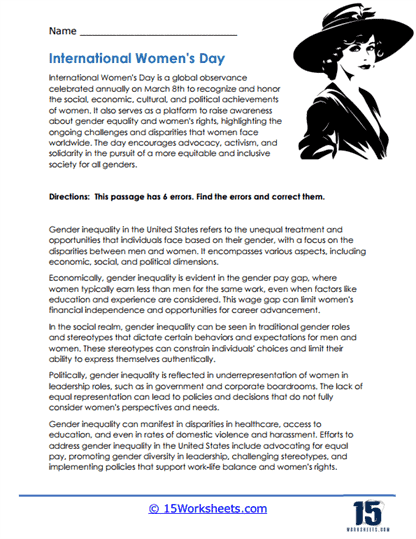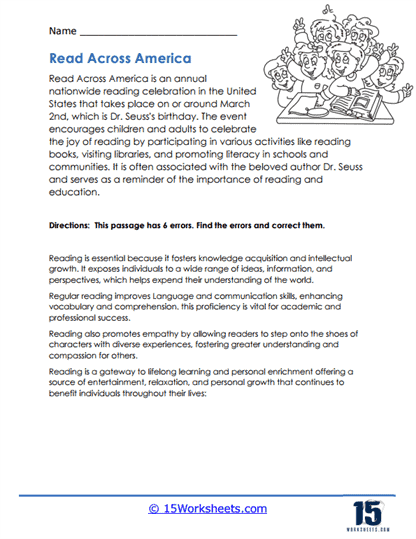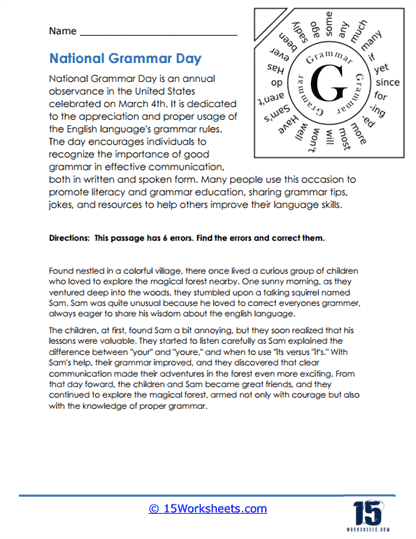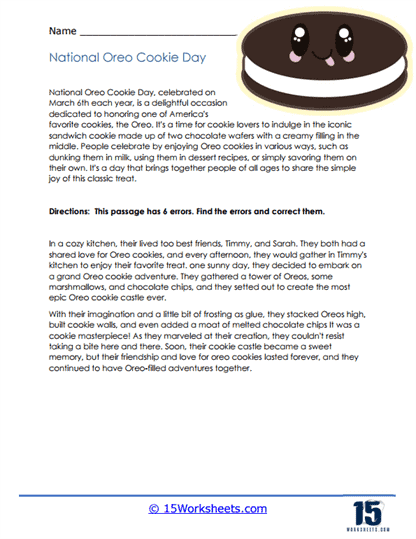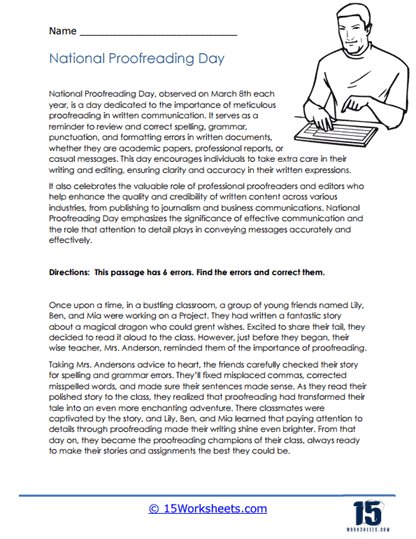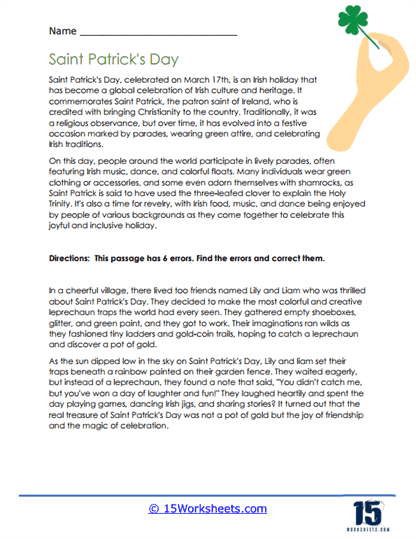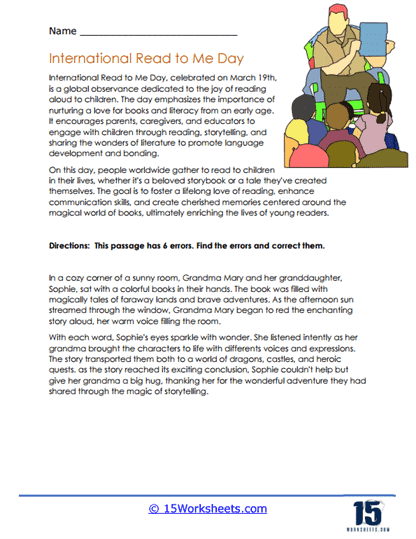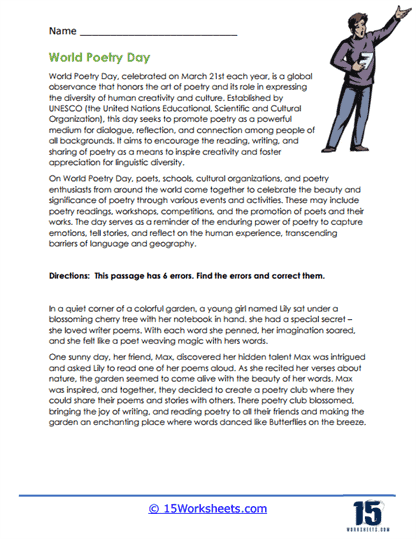March Everyday Edits Worksheets
All About These 15 Worksheets
These worksheets will help students improve their grammar, spelling, punctuation, and writing skills. These worksheets are typically used in classrooms, homeschooling settings, or for independent practice at home. They are part of a series of monthly worksheets, with each month focusing on a different theme or topic.
The March Everyday Edits worksheets are specifically themed around events, holidays, or aspects of the month of March. They usually include a short passage or paragraphs with several errors in grammar, spelling, punctuation, or capitalization. Students are tasked with identifying and correcting these errors. The worksheets often incorporate themes related to St. Patrick’s Day, Women’s History Month, and other events or topics relevant to March.
The different types of tasks that you see on these worksheets include:
Editing Practice – Students read the provided passage carefully and identify errors, which could include misspelled words, incorrect punctuation, improper capitalization, subject-verb agreement issues, and more.
Correcting Errors – After identifying the errors, students are required to make corrections to the passage, improving its overall clarity and correctness.
Language Skills – These worksheets help students practice important language and writing skills while also expanding their knowledge of specific events or themes associated with March.
Seasonal Relevance – The March-themed content makes the worksheets more engaging and relevant to students, helping them connect their learning to real-world events and holidays.
What things are celebrated in the month of March?
The month of March hosts a variety of celebrations and observances, ranging from cultural and historical events to awareness campaigns and holidays. Here, I’ll provide an overview of some notable things celebrated and observed in March.
One of the most recognized celebrations in March is St. Patrick’s Day, observed on March 17th. This holiday honors Saint Patrick, the patron saint of Ireland. People around the world celebrate by wearing green attire, participating in parades, and enjoying Irish food and music. It’s a day to celebrate Irish culture and heritage.
March is also recognized as Women’s History Month, dedicated to highlighting and honoring the achievements and contributions of women throughout history. This observance provides an opportunity to learn about and appreciate the accomplishments of women in various fields, from science and politics to the arts and activism.
International Women’s Day, on March 8th, is a significant part of Women’s History Month. It’s a global celebration that advocates for gender equality and women’s rights. People often mark this day with events, discussions, and initiatives aimed at promoting gender equality and supporting women’s empowerment.
In the United States, National Women’s History Month has been officially recognized since 1987, and it serves as a time to remember the vital roles women have played in shaping the nation’s history.
March is also known for the arrival of spring in the Northern Hemisphere. The vernal equinox typically occurs around March 20th or 21st, marking the official start of spring. This season brings longer daylight hours, blooming flowers, and warmer temperatures, making it a time of renewal and growth in the natural world.
In addition to these celebrations, March is home to numerous awareness campaigns, including National Nutrition Month, which encourages healthy eating habits, and Multiple Sclerosis Awareness Month, which raises awareness about this autoimmune disease.


